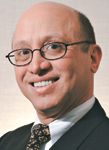- General Dermatology
- Eczema
- Chronic Hand Eczema
- Alopecia
- Aesthetics
- Vitiligo
- COVID-19
- Actinic Keratosis
- Precision Medicine and Biologics
- Rare Disease
- Wound Care
- Rosacea
- Psoriasis
- Psoriatic Arthritis
- Atopic Dermatitis
- Melasma
- NP and PA
- Skin Cancer
- Hidradenitis Suppurativa
- Drug Watch
- Pigmentary Disorders
- Acne
- Pediatric Dermatology
- Practice Management
- Prurigo Nodularis
Article
Military gains: Regenerative medicine project will impact burn, wound therapies for civilians, too
The Department of Defense (DOD) has awarded a multimillion-dollar research grant to develop new therapies for wounded soldiers, which may hasten the pace at which unique, innovative burn and wound healing and cosmetic procedures become commonly used in treating civilians.

Key Points

The Department of Defense recently announced that it has granted $85 million in research funding to the Armed Forces Institute of Regenerative Medicine (AFIRM), a network of physicians who specialize in tissue engineering and regenerative medicine.
The funds will be distributed over a five-year period. Specialties represented in AFIRM include dermatology, plastic/cosmetic surgery, general surgery, orthopedics and otolaryngology.
One consortium is led by the Wake Forest Institute for Regenerative Medicine and the University of Pittsburgh's McGowan Institute for Regenerative Medicine; the other is headed by the New Jersey Center for Biomaterials at Rutgers University and the Cleveland Clinic's National Center for Regenerative Medicine.
Twenty-eight universities and medical research institutions are involved.
Help for soldiers

He says AFIRM focuses on five major research areas: salvage, reconstruction, regeneration and transplantation of limbs; craniofacial reconstruction; burn repair; scar reduction; and treatment for compartment syndrome.
"Much of the research activity funded by AFIRM is already under way at the individual participating institutions," Dr. Clark tells Dermatology Times.
"For example, in a collaborative project with the department of emergency medicine at Stony Brook, we are looking at ways to prevent burn-injury progression, and we will also be studying a peptide I discovered that is critical in connective-tissue cell survival and proliferation.
"It is our hope that our efforts eventually will help prevent burn-injury progression in patients, whether they are wounded warriors or civilians," Dr. Clark says.
George Muschler, M.D., an orthopedic surgeon who heads the Cleveland Clinic's efforts in the Rutgers/Cleveland Clinic-led consortium, says AFIRM research will have a three-pronged impact on therapy for burns, critical limb injuries and clinical cosmetic surgery for civilians and soldiers.
"This research will transform burn care to make it even more effective and reduce recovery time," he says.
"Secondly, it will lead to the availability of new cells and biomaterials to regenerate new bone, nerves, tendons, ligaments and muscle tissue, so we can save limbs rather than amputate them.
"And third, it will accelerate our ability to do vascular allograft surgery, transferring vascular tissue from a donor to a patient, eventually with no immunosuppression," Dr. Muschler says.
Toll of war
According to DOD statistics, as of mid-April, nearly 29,800 soldiers had been wounded in action in Iraq; another 1,927 in Afghanistan.
Some doctors question why it has taken so long to launch this kind of research effort.
"It is unfortunate that the government waited so long. However, it has also taken time to recognize the severity of the problem," says David J. Goldberg, M.D., director of Skin Laser & Surgery Specialists of New York/New Jersey and clinical professor of dermatology at New York's Mount Sinai School of Medicine.
"A war-time analogy would be Vietnam, where the government only recognized the severity of the Agent Orange problem well after the war ended," Dr. Goldberg says.
Adam J. Katz, M.D., associate professor in the department of plastic surgery at the University of Virginia, another consortium member, says, "I cannot comment on the timing other than to say that it is never too late for innovative and ambitious thinking.
"The AFIRM grant is a completely new research paradigm in terms of structure, breadth and ambition. For me, it's a genuine privilege to be a part of this effort," he says.
"We are initiating clinical trials to test the role of autologous fat transfer in the prevention and management of scars, and its potential to enhance healing of complex wounds, using controlled, blinded, randomized study designs," Dr. Katz says.
"The aim is to provide evidence-based methods, techniques and treatment guidelines for AFT.
"We also are focusing on the development and use of autologous adipose-derived, cell-based therapies and constructs for the repair, replacement and/or regeneration of the hypodermis, dermis and/or the epidermis."
According to Stony Brook's Dr. Clark, many medical companies have expressed a willingness to work with the AFIRM consortia as partners.
"We are extremely pleased that the American medical-device industry has taken such a keen interest in speeding these important new therapies to market not just for injured service members, but for civilian patients as well," he says.
"We believe that this participation will ultimately lead to better healthcare options for all Americans."





